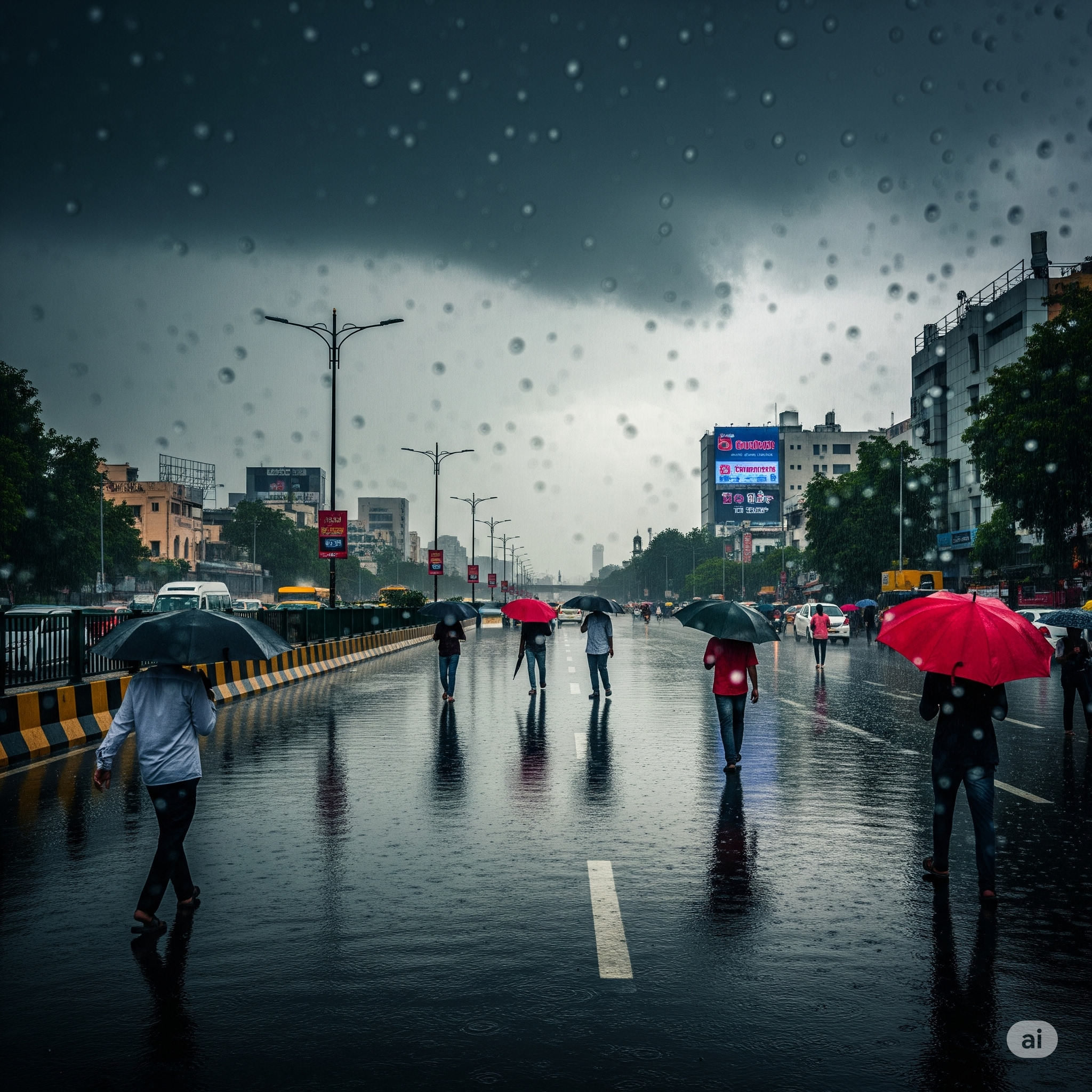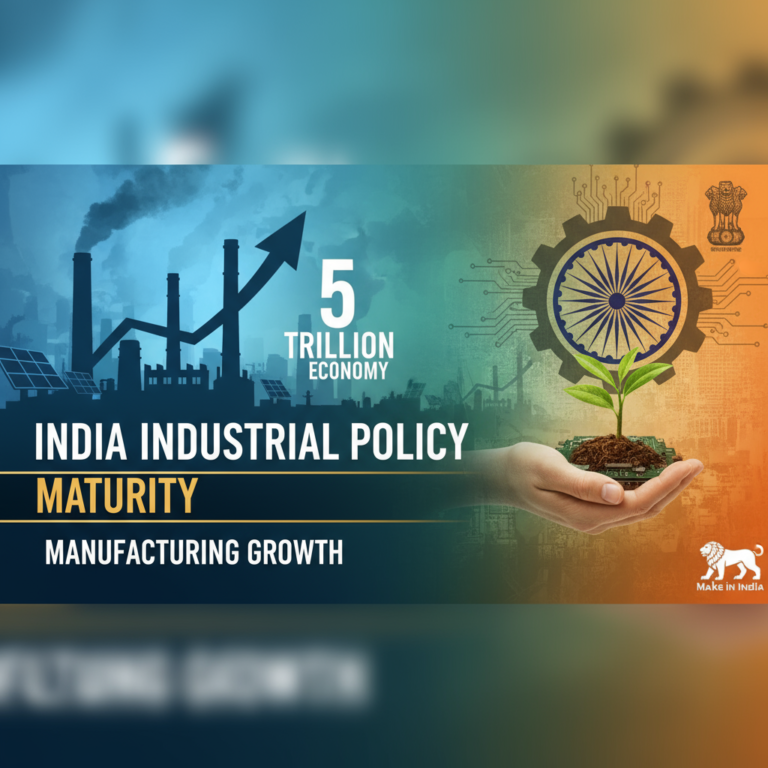✅ Summary:
- IMD reports the earliest monsoon arrival in North India since 2013
- Offers relief from heatwaves, but raises flood and landslide concerns
- Enhances agricultural productivity and reduces groundwater stress
- Urban areas face risks from poor drainage and flash flooding
- Climate change is making monsoons more erratic and intense
- Preparedness, adaptation, and smart city planning are vital going forward
A Timely Arrival Amid Soaring Temperatures
The India Meteorological Department (IMD) recently confirmed that the southwest monsoon has arrived early in Ladakh, Himachal Pradesh, Jammu & Kashmir, and Punjab, and is expected to hit Delhi within the next two days—marking its earliest arrival since 2013. This comes as a major relief for north India, which has been battling record-breaking heatwaves, drought alerts, and escalating power demand.
But while the arrival of rains is a cause for optimism, it also calls for a deeper understanding of climate variability, water management, agricultural planning, and disaster preparedness. This blog explores the meteorological, agricultural, hydrological, and policy implications of this early monsoon, with a focus on its scientific underpinnings and regional impact.
1. Understanding the Indian Monsoon System
1.1 The Southwest Monsoon: India’s Lifeline
The southwest monsoon is a large-scale seasonal wind system that brings about 70–80% of India’s annual rainfall. It begins over the Kerala coast in early June and typically progresses northward by mid-July.
The monsoon cycle is driven by:
- Differential heating between land and ocean
- ITCZ (Inter-Tropical Convergence Zone) movement
- Jet stream interactions and El Niño/La Niña cycles
1.2 Why Is This Onset “Unusually Early”?
Delhi and neighboring regions typically witness monsoon onset between June 27 and July 1. In 2025, the monsoon’s arrival by June 23–25 suggests an accelerated northward advance likely aided by:
- Weakened westerlies, allowing easterlies to dominate
- Positive Madden-Julian Oscillation (MJO) phases enhancing convection
- Cooler Bay of Bengal SSTs, favoring organized low-pressure systems
According to IMD, this is the earliest onset in Delhi since 2013, when the monsoon reached the city by June 16.
2. Heatwave to Rainstorm: What Just Happened in North India?
Before the monsoon’s onset, North India endured an extended heatwave with temperatures exceeding 47–48°C, especially in Rajasthan, Haryana, and Delhi.
2.1 Factors Behind Extreme Heat
- A persistent anti-cyclonic system over northwestern plains
- Dry continental air intrusion, inhibiting convective activity
- Urban heat island effect, particularly intense in Delhi NCR
2.2 Monsoon Impact: A Sudden Shift
With monsoon arrival:
- Daytime temperatures drop by 5–8°C
- Relative humidity increases, changing heat index values
- Dust storms and thunder squalls often accompany first rains
While the monsoon breaks the heat, it also brings hydro-meteorological risks, especially when arriving abruptly over dry, hardened soil.
3. State-Wise Impact Assessment
3.1 Himachal Pradesh & J&K: Water Boost and Landslide Risks
- Positive: Early recharge of hill aquifers, boosted horticulture in apple belts
- Risk: Sudden cloudbursts and landslides in fragile Himalayan slopes
- IMD and state authorities have already issued yellow warnings in upper reaches
3.2 Ladakh: A Rare Monsoon Witness
- Ladakh lies in a rain-shadow zone, typically receiving <100 mm rainfall
- However, early monsoon surges can cause flash floods, as seen in the 2010 Leh disaster
- Better hydrological mapping and community early warning systems are crucial
3.3 Punjab: Relief for Paddy Transplantation
- Timely monsoon arrival eases groundwater stress
- Reduces pressure on tube well irrigation in paddy cultivation
- Helps stagger sowing cycles, reducing peak water demand
3.4 Delhi NCR: Cooling Effect and Urban Drainage Concerns
- First monsoon spells help cool the city but often expose urban drainage weaknesses
- Potential for localized flooding, traffic gridlocks, and health risks like vector-borne diseases
4. Agricultural & Water Management Implications
4.1 Kharif Crop Calendar
- An early monsoon allows earlier sowing of paddy, pulses, cotton, and maize
- Better yield outcomes if rainfall is well-distributed and not excessive
- Reduces dependency on diesel pumps, improving rural energy economics
4.2 Reservoir & Groundwater Recharge
According to Central Water Commission (CWC):
- Major reservoirs in northern India were at 60–70% storage before the monsoon
- Early rainfall can assist in improving live storage, especially in Bhakra and Pong dams
- Helps moderate hydroelectric generation gaps
5. Climate Change Context: Is This the New Normal?
Climate experts point to changing monsoon behavior as part of a broader climate variability trend.
5.1 Erratic Onsets, Uncertain Patterns
- Early or delayed onset doesn’t guarantee normal rainfall
- Rising occurrence of localized heavy downpours, instead of steady rains
- IMD predicts a higher frequency of monsoon depressions turning into extreme weather
5.2 Urban Climate Vulnerability
Cities like Delhi, Chandigarh, and Jammu are increasingly vulnerable to heat-flood cycles, where:
- Urban heatwaves amplify due to poor green cover
- Sudden rainfall over dry land causes runoff and flash flooding
- Improper drainage chokes stormwater systems
6. Preparedness & Response Measures
6.1 Government Actions
- IMD issued region-specific alerts with 72-hour forecasts
- Disaster Response Forces on standby in hilly regions
- Delhi’s MCD has activated drain desilting and flood-zone inspection protocols
6.2 Recommendations
- Real-time weather dashboards for vulnerable zones
- Integration of climate projections into city planning (NDMA + IMD + MoHUA)
- Encourage rainwater harvesting, especially in urban & peri-urban homes
- Promote crop insurance and micro-irrigation for rural resilience
Conclusion: Monsoon as Both Relief and Responsibility
While the early monsoon has brought a welcome reprieve from extreme heat, it comes with both opportunities and responsibilities. The rains rejuvenate farms, recharge water tables, and cool overheated cities—but they also test the readiness of infrastructure, governance, and climate adaptation frameworks.
As India braces for another monsoon season shaped by climate unpredictability, it must view the rains not just as a meteorological event, but as a complex socio-economic and ecological challenge. Smart policy, citizen awareness, and tech-driven preparedness will be key to turning monsoons into a true asset, not a disaster in disguise.









+ There are no comments
Add yours